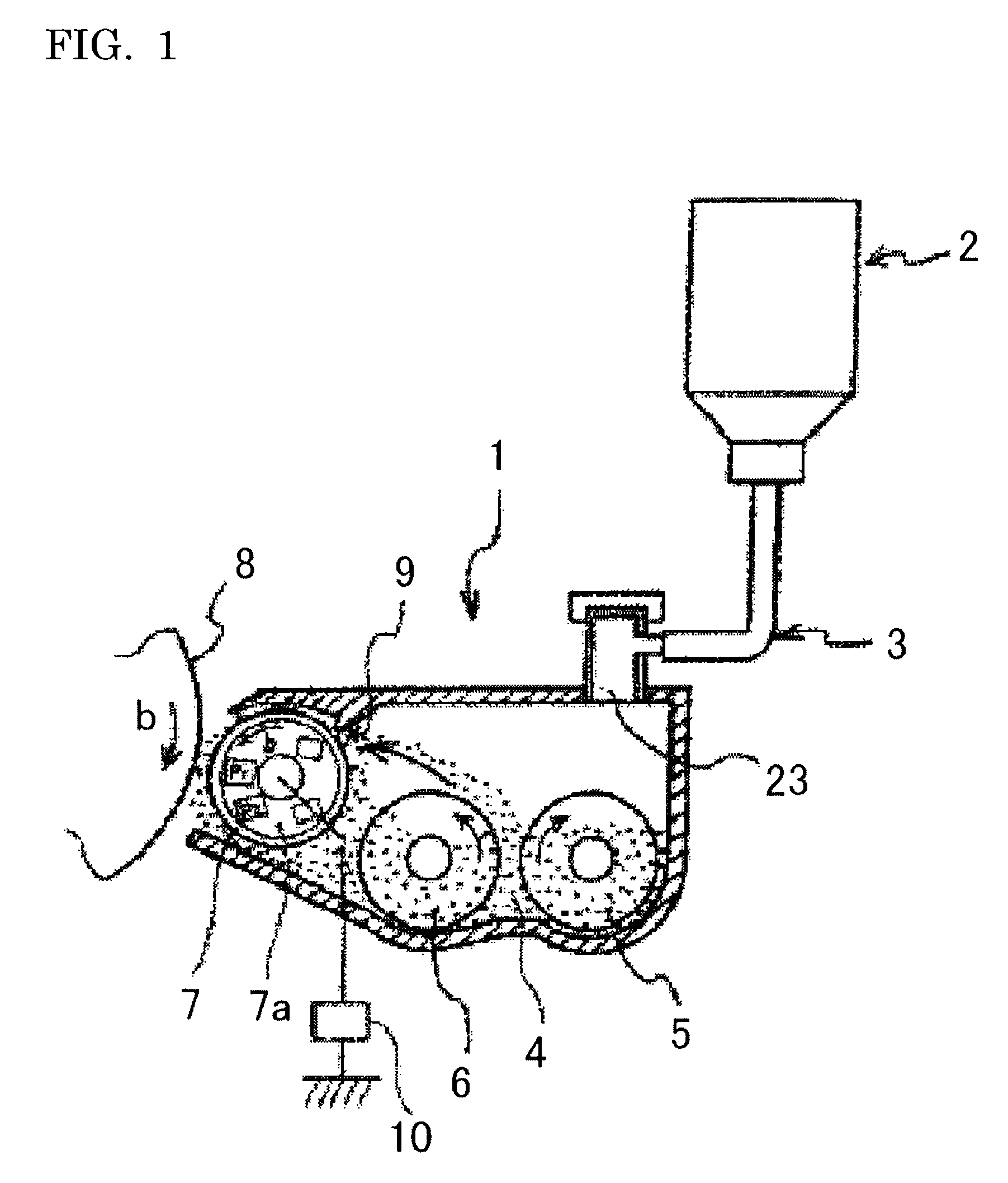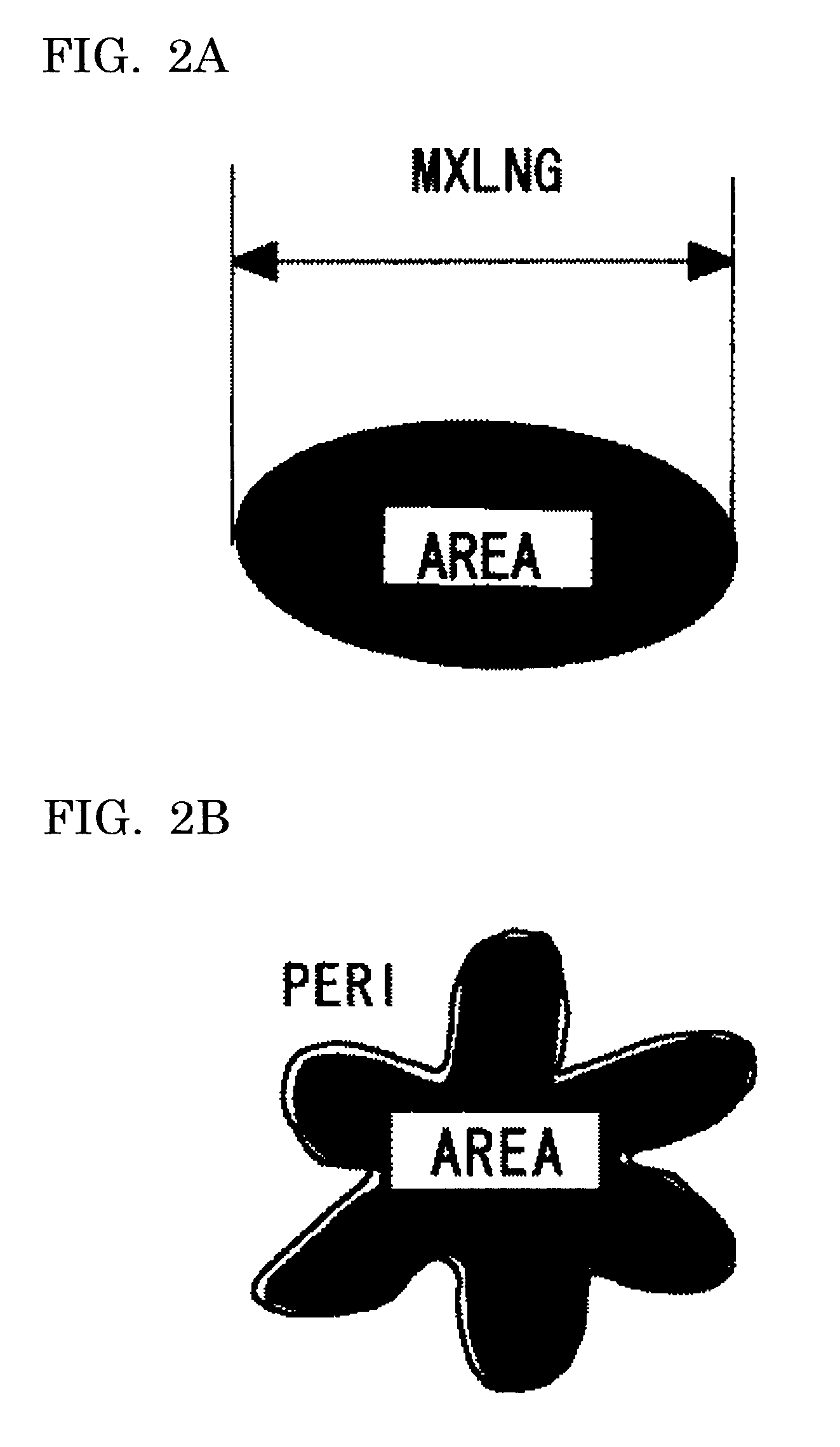Electrostatic image developing toner, toner kit and image forming apparatus
a technology of toner kit and development toner, which is applied in the field of electrostatic image development toner, can solve the problems of poor blocking resistance of toner, resins are also problematic as to and the reduction of charging capacity tends to be pronounced, so as to improve the blocking resistance and reduce the charging capacity of developers. , the effect of low temperature fixability
- Summary
- Abstract
- Description
- Claims
- Application Information
AI Technical Summary
Benefits of technology
Problems solved by technology
Method used
Image
Examples
examples 1 to 12
[I] EXAMPLES 1 TO 12 AND COMPARATIVE EXAMPLES 1 TO 4
Evaluation Device
[0470]Images to be evaluated are formed by use of evaluation devices A, B, C, D or E.
Evaluation Device A
[0471]Evaluation device A was a tandem full-color laser printer equipped with a developing unit of a four color non-magnetic two-component system and a four-color photoconductor (IPSiO Color 8000, by Ricoh Co.) of which the fixing unit was modified into an oilless fixing unit and tuned. The printing rate was high-speed printing of 20 to 50 sheets / min of A4-size.
Evaluation Device B
[0472]Evaluation device B was a tandem full-color laser printer equipped with a developing unit of a four color non-magnetic two-component system and a four-color photoconductor (IPSiO Color 8000, by Ricoh Co.), in which the printer was modified into an intermediate transfer type such that images were primary-transferred onto an intermediate transfer body and then the toner images were secondary-transferred onto a transfer material; and ...
example 1
Synthesis of Linear Polyester Resin
[0499]Four hundred and thirty parts of an adduct of bisphenol A with 2 moles of PO, 300 parts of an adduct of bisphenol A with 3 moles of PO, 257 parts of terephthalic acid, 65 parts of isophthalic acid, 10 parts of maleic anhydride, and 2 parts of titanium dihydroxy bis(triethanolaluminate) as a condensation catalyst were poured into a reactor vessel equipped with a condenser, a stirrer and a nitrogen gas inlet, and the mixture was allowed to react at 220° C. for 10 hours under nitrogen gas flow while distilling away the water generated in the reaction. Then the reactant was allowed to react under a reduced pressure of 5 to 20 mmHg, and then taken out when the acid value came to 5 mgKOH / g. After cooling to room temperature, the reaction product was milled, consequently, a linear polyester resin AX1-1 was obtained.
[0500]The resulting AX1-1 contained no THF-insoluble matter, and had an acid value of 7 mgKOH / g, a hydroxyl value of 12 mgKOH / g, a glass...
example 2
Synthesis of Linear Polyester Resin
[0513]A linear polyester resin AX1-2 was prepared by a similar reaction as that of Example 1 (AX1-1), followed by cooling to room temperature and milling except that the polycondensation catalyst was changed into titanyl bis(triethanolaluminate).
[0514]The resulting AX1-2 contained no THF-insoluble matter, and had an acid value of 8 mgKOH / g, a hydroxyl value of 10 mgKOH / g, a glass transition temperature Tg of 60° C., a number average molecular mass Mn of 6820, and a peak top molecular mass Mp of 20180. The rate of the molecular mass of no more than 1500 was 1.1%.
Synthesis of Non-Linear Polyester Resin
[0515]A linear polyester resin AX2-2 was prepared by a similar reaction as that of Example 1 (AX2-1), followed by cooling to room temperature and milling except that the polycondensation catalyst was changed into titanyl bis(triethanolaluminate).
[0516]The resulting AX2-2 contained no THF-insoluble matter, and had an acid value of 33 mgKOH / g, a hydroxyl ...
PUM
| Property | Measurement | Unit |
|---|---|---|
| volume average particle diameter | aaaaa | aaaaa |
| acid value | aaaaa | aaaaa |
| apparent viscosity | aaaaa | aaaaa |
Abstract
Description
Claims
Application Information
 Login to View More
Login to View More - R&D
- Intellectual Property
- Life Sciences
- Materials
- Tech Scout
- Unparalleled Data Quality
- Higher Quality Content
- 60% Fewer Hallucinations
Browse by: Latest US Patents, China's latest patents, Technical Efficacy Thesaurus, Application Domain, Technology Topic, Popular Technical Reports.
© 2025 PatSnap. All rights reserved.Legal|Privacy policy|Modern Slavery Act Transparency Statement|Sitemap|About US| Contact US: help@patsnap.com



